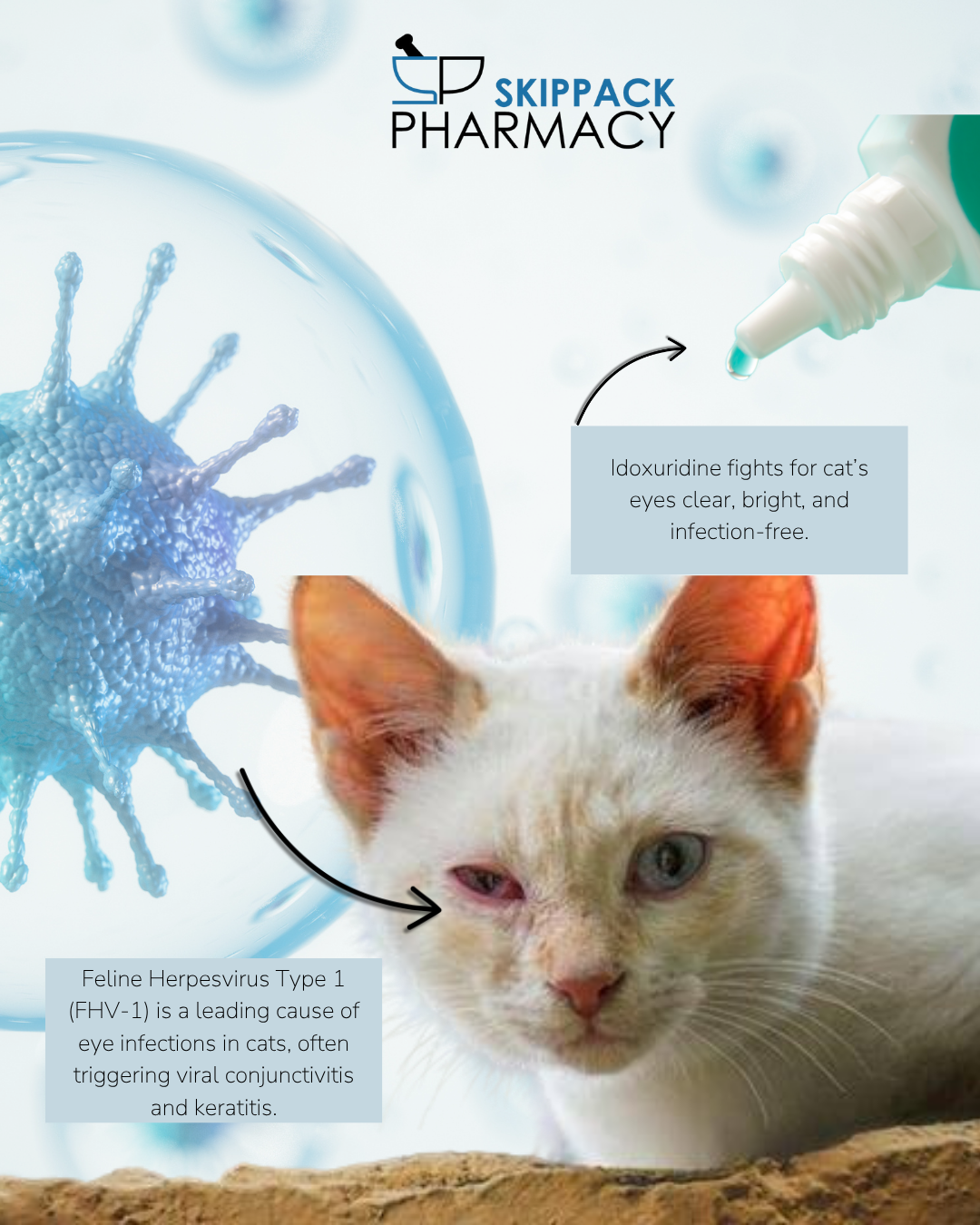
- Pet/Vet
-
by Skippack Pharmacy
A Classic Antiviral for Feline Eye Health
Eye infections in cats can be more than just a minor nuisance—some are caused by persistent viruses that can compromise ocular health and even vision if left untreated. Among these, feline herpesvirus type 1 (FHV-1) is a common culprit, responsible for viral conjunctivitis and keratitis in cats of all ages. Fortunately, veterinary medicine has a trusted tool in its arsenal: idoxuridine eye drops, an antiviral treatment that’s been used effectively for decades.
Understanding Feline Herpesvirus and Ocular Disease
Feline herpesvirus-1 is a highly contagious virus that primarily affects the respiratory tract and eyes. In the eye, it can cause inflammation of the conjunctiva (conjunctivitis) and cornea (keratitis), often leading to eye discharge, squinting, pain, and in severe cases, corneal ulcers. Once infected, cats usually carry the virus for life, and episodes of illness can recur, especially during times of stress or illness. Because FHV-1 replicates in the epithelial cells of the eye, antiviral treatments are necessary to suppress viral activity, limit corneal damage, and relieve discomfort.
How Idoxuridine Works
Idoxuridine is a thymidine analog—a synthetic molecule that resembles one of the building blocks of DNA. Its mechanism of action involves being incorporated into viral DNA during replication. Once idoxuridine is integrated into the virus’s genetic material, it disrupts the normal structure and function of the DNA, effectively halting further viral replication. This targeted interference makes idoxuridine especially useful against herpesviruses, which rely on DNA replication for propagation. However, it does not eliminate the virus entirely; rather, it helps control outbreaks and reduce the severity of clinical signs.
Clinical Use in Cats
Idoxuridine eye drops are applied topically to the affected eye, often multiple times a day (typically 4–6 times, depending on the severity and the veterinarian’s recommendation). Because idoxuridine is not absorbed systemically, it has a relatively low risk of side effects, although it must be used frequently to be effective. Treatment usually continues for 5 to 10 days, or until symptoms resolve. In more chronic or resistant cases, idoxuridine may be part of a longer-term management strategy, often in conjunction with supportive care or immune-boosting supplements like L-lysine.
Safety and Limitations
Idoxuridine is generally safe and well-tolerated, though mild eye irritation may occur in some cats, particularly if the eye is already inflamed. Because it is only effective against DNA viruses, it is not useful for treating bacterial or fungal eye infections. It’s also important to remember that idoxuridine doesn’t cure herpesvirus. Cats will still carry the virus and may have future flare-ups. However, when used early and appropriately, idoxuridine helps minimize corneal damage and improves comfort during active infection phases.
A Time-Tested Option for Feline Eye Care
Despite being one of the older antivirals in veterinary use, idoxuridine remains a reliable and accessible option for managing feline herpesvirus eye infections. For cats struggling with recurring conjunctivitis or corneal ulcers due to FHV-1, idoxuridine eye drops can make a significant difference in both comfort and eye health. As always, pet owners should consult with their veterinarian before starting any treatment, and follow dosing instructions closely to ensure the best outcome. With proper care and timely treatment, cats with viral eye infections can recover quickly—and keep their vision bright and clear.

